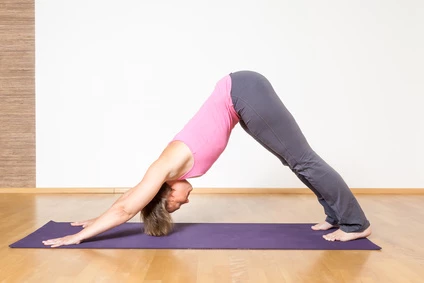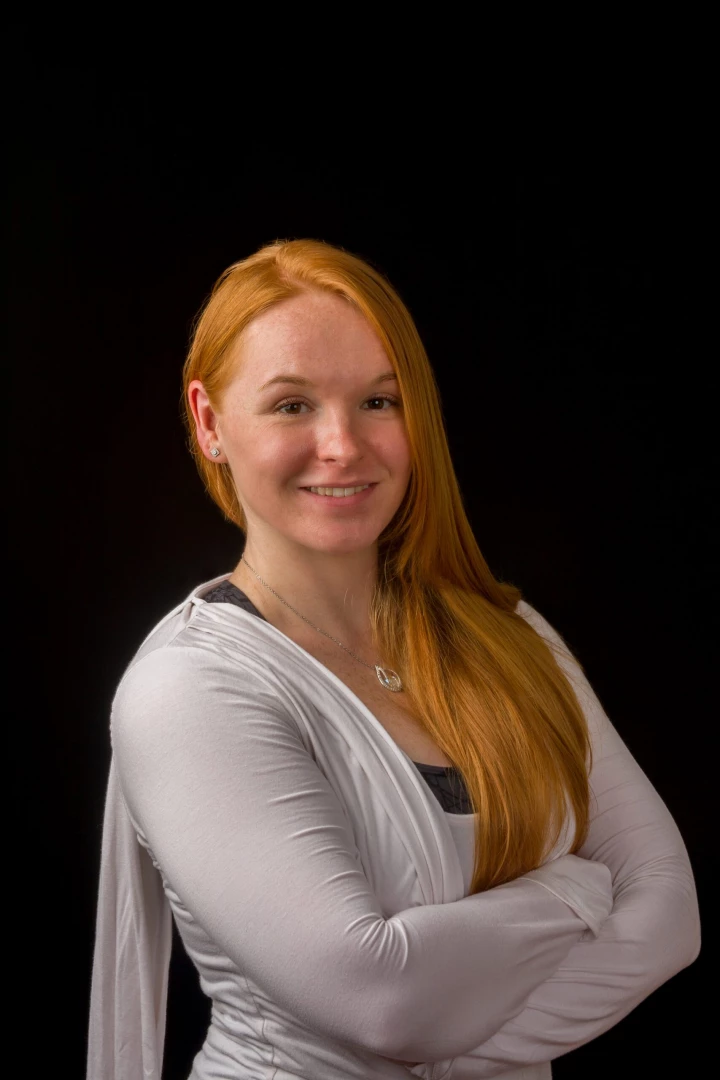Yoga Backbends: 6 Keys to Healthy Alignment in Ustrasana (Camel Pose)

Yoga backbends are like a magic trick. If you keep your eyes on the spine, you miss out on what the rest of the body is doing. Seeing a beautiful spinal curve in Camel Pose (Ustrasana) is mesmerizing. However, in this gracefully executed posture, one might overlook the degree of flexibility in the front body, the actions of the feet and legs, and the stability of the pelvis to support the mobility of the spine.
Let’s take a look behind the magician’s screen at these crucial alignment keys to practicing Ustrasana.
6 Ways to Prepare for Camel Pose
1. Start from the Ground

The fundamentals of every yoga pose begin with the base. The base changes depending on a pose’s orientation. In a standing balance, the feet are the base, while in an arm balance, the hands are the base.
Camel Pose is unique due to the fact that the tops of the feet and shins form its base. By kneeling and firmly pressing your lower leg and foot down into the floor, you contract both the pelvic floor and transverse abdominus muscles. This action stabilizes and supports the movement of the lumbar spine so that the lower back doesn’t move into extreme extension.
This is important because we shift our attention from a stable lumbar spine to encouraging extension in the upper back or thoracic spine, leaving the lower back spacious. Get a feel for the shin bone press by practicing Tabletop Pose (Bharmanasana) and then move into Cow Pose (Bitilasana) with the same shin press.
2. Find Neutral Legs

Creating the action of internal rotation in the thigh bones maintains the space in the lower back so that the pelvis and sacrum can safely tilt. The pelvis spills backward over the tops of the thigh bones. To prevent the legs from splaying apart, you can use a strap around your outer hips.
Eventually, you would progress by using the lateral buttock muscles to maintain the action of the legs rolling inward to parallel with each other. Practice this action in yoga poses like Pyramid Pose (Parsvottanasana) (pictured above) and Hero’s Pose (Virasana).
3. Place Your Shoulder Blades Against Your Ribcage
When you round your shoulders forward like you do when you’re typing on a computer or sitting at a desk, your upper back becomes overstretched, your chest muscles tighten, and your shoulder blades wing away from the rib cage. In order to find the glorious arch in your upper back, your shoulder blades must press upward into your rib cage to counteract the slumping seated spine.
Try internally and externally rotating your arms in Mountain Pose (Tadasana). Notice that when you rotate the arms inward, your shoulders come forward. When you externally rotate your arms, observe how your shoulder rotates outward. The muscles on your upper back engage and fix your shoulder blades onto your back while your chest expands horizontally.
Pressing your shoulder blades into your back encourages your spine to lift upward in Camel Pose. Keep your shoulder blades present on your upper back while standing in Tadasana. Then, lean back and keep your hips positioned over your ankle bones to form a small standing backbend with your arms down by your sides.
4. Lengthen Your Spine

Think of your spine as a tightly strung pearl necklace. When you try to bend the necklace, the sides of the pearls bump into each other, making the curving action difficult and small. The vertebrae of the spinal column are quite similar. The spinous processes bump into each other, and the capacity to extend the spine diminishes without lengthening it. A larger space between each vertebra means that the vertebrae have more room to bend before the spinous processes of the vertebrae come into contact with each other.
You can practice lengthening the neutral spine in Downward Facing Dog Pose (Adho Mukha Svanasana) by bending your knees, pressing your hands into the floor, and lifting the pelvis so that the ischial tuberosities (sit bones) are the apex of your pose. Visualize the string of pearls and observe how your spine feels with the tightly wound pearl necklace and the spacious one. Then, feel in your body which visualization is more conducive to backbending.
5. Extend Your Arms
A common challenge in Camel Pose is the arms reaching back for the feet. As I discussed previously, if the front of the chest is tight and the shoulders slump forward, the upper back can’t extend. This makes it difficult and uncomfortable to reach your arms back to your feet. You feel as if your heels are a million miles away.
To compensate, your hips move back toward your calves (which may throw off the engagement of the lateral buttock). By reaching your arms back and keeping them shoulder-width apart, you may find that your hands are not that far from your blocks or from your feet.
Stand in Tadasana, holding a strap behind your back with your arms shoulder-width apart. Without moving your body out of Tadasana alignment, slowly move your arm bones straight back behind you. Be careful not to lift your arms higher and lose the connection of the shoulder blades against the back.
6. Bridge Pose Can Prepare You for Camel Pose 
1. Lie down on your back with your knees bent and your feet hip-distance apart.
2. Externally rotate your upper arms while you press your palms down into the floor.
3. Lift your chest up toward your chin and observe how your upper body moves away from your arm bones while the arm bones stay in place.
The process of moving into Bridge Pose (Setu Bandha Sarvangasana) in this way is similar to how we can move into Camel Pose because both poses are of the same shape. They differ in their orientation to gravity.
Packaging the Elements of Camel Pose 
- Kneel on your mat, aligning your pelvis over your knees.
- Set blocks up at their tallest height, anywhere between your shins and your ankles, on the outsides of your legs. The closer to your ankles, the more extension of the arms you will need.
- Press your shin bones and the tops of your feet down.
- Keep your thighs neutral and the outer hips engaged.
- As you press down, lengthen your spine up toward the ceiling (not back).
- With your arms externally rotated, press your shoulder blades against the upper back.
- Tilt the top of your pelvis back as you extend your arms back for your blocks.
- Stay here for a breath or two and revisit each element.
- If your hips are still aligned over your knees, try lowering the height of the blocks.
- 10. If you can maintain your alignment, try lowering your block again, and if you can still maintain alignment, you can try reaching for your heels.
Practicing the crucial alignment keys of Camel Pose separately helps you focus in on parts of the pose that may be hard to practice when you’re in the pose. Practicing these keys can also help you refine how you practice this backbend. Backbends can look as if a yoga practitioner simply has a flexible spine, but you can see here that every part of your body plays a pivotal role. Continue to practice and explore the alignment of Ustrasana for a stronger, more satisfying, and liberating backbend.
More Restorative yoga practice tips with YogaUOnline and Allison Schleck’s Yoga for a Heavy Heart: 4 Restorative Poses to Soothe a Heavy Heart.

Allison Schleck, E-RYT 500, RPYT, is a vinyasa-based yoga teacher fascinated by the intricate relationship between the mind and body. She offers a range of alignment-focused classes that touch on anatomy, philosophy, and creative propping with a mindful approach. In addition to teaching group classes and managing the Yoga Culture studio in Danbury, CT, she also teaches at Open Door Family Medical Center in Westchester, NY, empowering mothers to be with prenatal yoga classes and childbirth education. You can find her @allisonschleck on Instagram and www.allisonyoganidra.com.



